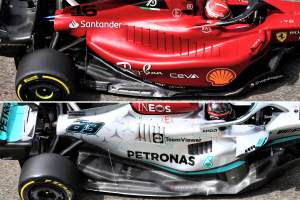Up Next

Red Bull ended Formula 1 2022’s final pre-season test fastest, with Max Verstappen’s lap of 1m31.720s putting car number one to the top of the Bahrain timesheets.
But the timing screen is of limited use when it comes to understanding the real stories of testing. So after three days of running in Bahrain, these are the key storylines you need to know to understand what we really learned from the last.
Red Bull has moved the goalposts
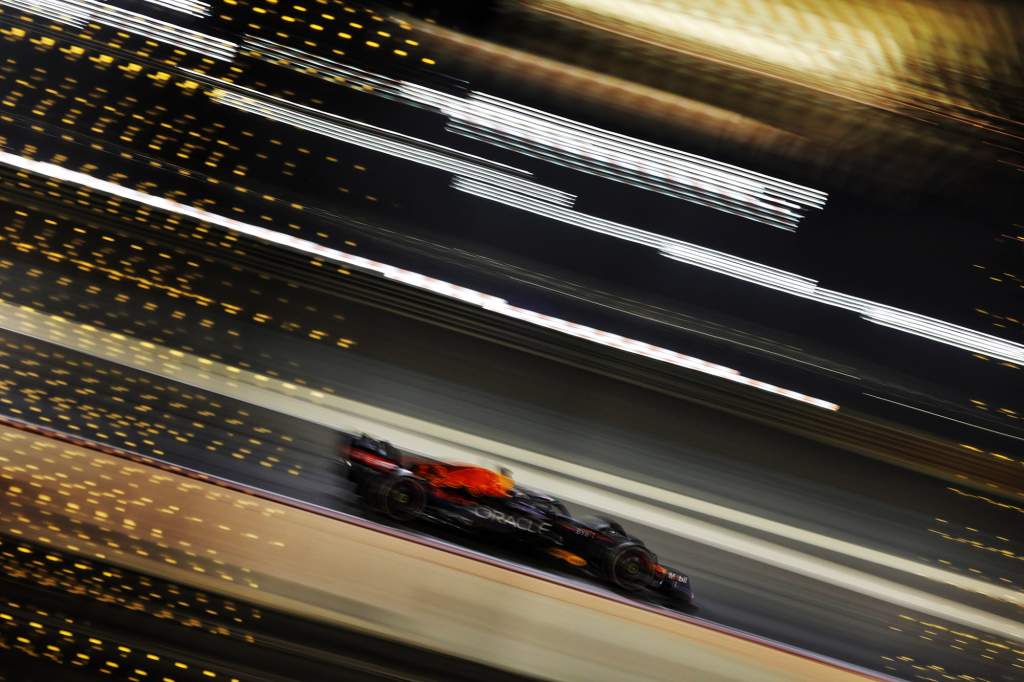
Red Bull appeared to move the goalposts with its updated car on the final day and Verstappen was quickest on both single lap and long run pace (such as it was).
We said yesterday that Red Bull’s running was deeply impressive beneath the radar – and Verstappen underlined the point by eclipsing even Ferrari. Mercedes, as things stand, is not in the same race as it continues to struggle with its car’s porpoising.
It looks like Red Bull was just a little behind Ferrari in its preparation and took longer to bring out the full potential of its car. The Ferrari looks close behind and both cars seem much easier to drive than the Mercedes.
There is no evidence that Mercedes was on the pace of either the red or the blue car in its current state. But it would be no surprise if a whole chunk of performance could be unlocked once its porpoising is better controlled.
Ricciardo and McLaren’s backward step

Things went well for McLaren at Barcelona, where the car looked brisk and porpoising afflicted it less than most. But in Bahrain, things were much tougher with brake problems dogging it throughout the three days.
The problem was that McLaren calculated its brake-cooling requirement having slightly underestimated the true pace of the 2022 cars.
That meant the brakes were overworked, meaning that what technical director James Key called “crispy” brakes were being spent rapidly and run-lengths were limited.
Modified parts, including tweaked brake ducts, arrived in time for the final day but didn’t solve the problem. That means that McLaren heads into the season-opening Bahrain Grand Prix weekend without having been able to simulate a race distance having been limited to short runs and lower-fuel running.
Its programme was also disrupted by Daniel Ricciardo being ill and then eventually being diagnosed with COVID-19 – leaving Lando Norris to do all the driving.
At least McLaren’s limited running – just 200 laps over the three days, the least of any team in Bahrain – meant he wasn’t too overworked.
Clearest 2022 car weakness exposed
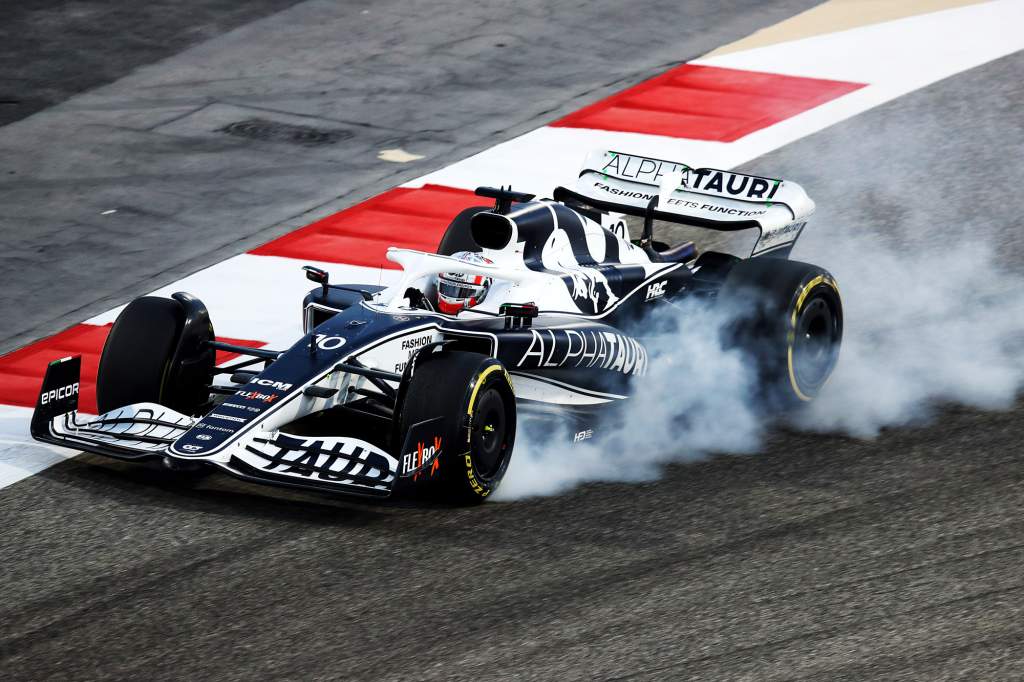
Precision is the key in these 2022 cars, at least at low speed. Get it wrong and they just drift wide of the target and look as agile as a freighter.
A final-hour trackside excursion took The Race down to Turn 10. It was the only option after all I’d heard from the drivers and seen on TV of this corner exposing where the 2022 cars are at their weakest.
As if to provide an immediate confirmation, Nicholas Latifi’s Williams was the first to arrive – and did so locking up the front left, taking to the run-off as a result.
After the Turn 8 hairpin the track rises and flicks left through the fast uphill Turn 9 before quickly falling away into the slow, tightening Turn 10 left-hander onto the back straight. It’s always been tough but it looks a nightmare in the 2022 cars.
The approach speed to Turn 10 is slightly slower than last year yet the drivers still have to get off the throttle and onto the brakes sooner, for longer. That leads to a much lower minimum speed. It’s the only option to keep things under control and go quickly.
We knew from Barcelona that these heavy cars struggled at low speed with their reduced aerodynamic load, stiffer suspension and low-profile tyres.
But the reduced ride quality is also more evident here. And the combined effect is a car that looks visibly difficult to manage under braking, especially when the car is unbalanced – basically, turning just before/while braking.
The competitive spread is tighter
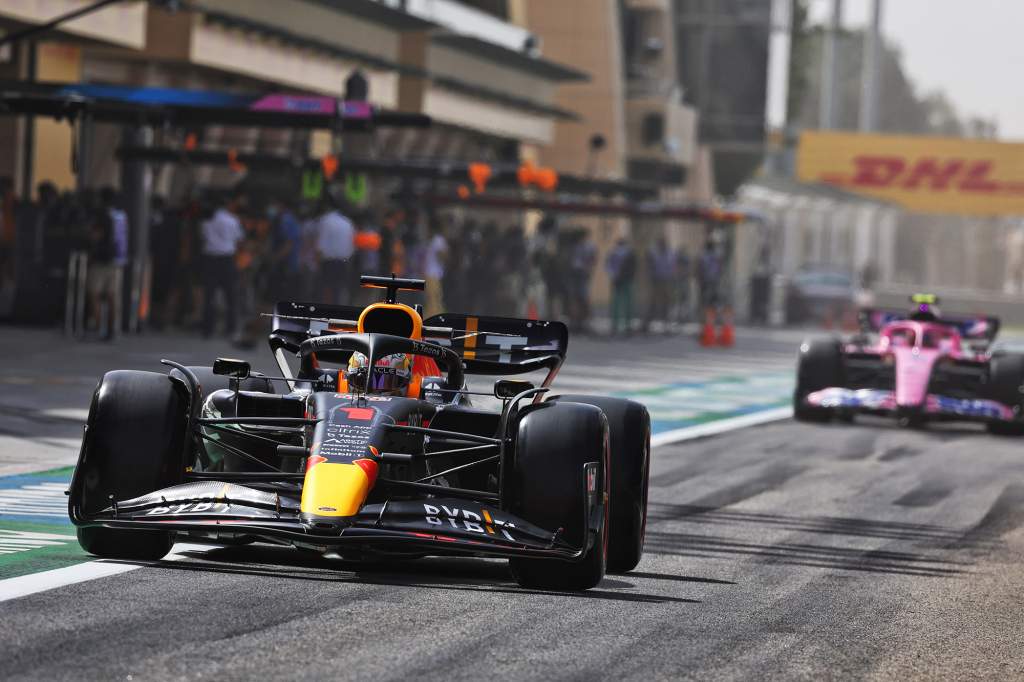
The competitive order may still be unpredictable, but the feeling among the teams is that the overall spread of fastest to slowest car is tighter this year than last year.
The spread in the Bahrain test was actually very similar to the gap in Bahrain qualifying last year – 3.350s this year compared to 3.452s. So that might sound like a case for nothing having changed.
But when you discount Williams, which did its low-fuel run in the heat of the afternoon of the final day in the hands of Alex Albon, ending up a completely unrepresentative 1.879s off the back, the picture is very different.
If you take the gap from pacesetter Red Bull to eighth-quickest McLaren, it’s just 1.471s. Even with the tendency for the lap times of the quickest cars to be contained in testing, that still leaves plenty of headroom for the real gap to be bigger but still well under what we saw last year.
If the qualifying gaps are remotely in line with this, the FIA and F1 will be delighted that one of the objectives of the regulations – to close up the field – has successfully been achieved.
The first legality row is brewing nicely

Mercedes’ suite of upgrades including a dramatic sidepod solution was the first major development to be sighted since the 2022 cars broke cover at the first test in Spain and with that came the first bit of legality intrigue of 2022.
The W13’s sidepods have significantly narrowed at the front with the bodywork effectively shrink-wrapped while the shroud housing the upper Side Impact Protection system (SIPS) is used as the mounting for the wing mirror and heavily aero profiled, featuring a series of vanes mounted vertically on the shroud below the mirror.
After the revised Mercedes broke cover on Thursday, the respected Auto Motor und Sport journalist Michael Schmidt quoted Red Bull team boss Christian Horner as suggesting it was illegal and against the spirit of the rules (something Horner and Red Bull later denied).
Ferrari then questioned the Mercedes mirrors too. Mattia Binotto said they are “quite surprising, something we’re not expecting” and that it “needs to be addressed” for the future.
The implication from both was that Mercedes’ designs might explicitly conform to the technical regulations but go against the intention of the rules. It’s the first sign we’ve had of discontent that a team has found a perceived loophole.
What’s crucial to understand is that there’s no indication the Mercedes design should do anything to make the car harder to follow. This is important because it would in theory rule out any action from the FIA to stop such a design on the grounds of protecting the objectives of the new rules.
However, it’s still possible the mirrors, for example, could be viewed as a design that the rules don’t explicitly outlaw but were not designed to allow.
There is a meeting of the FIA’s technical advisory committee on Tuesday, which will include a discussion over the first “discrepancies” between the rules as written and the cars the teams have designed.
Based on what’s been said so far it would be a surprise if a Mercedes design element or two does not crop up…
Porpoising is here to stay

There’s no easy way around the porpoising problem with these cars.
Teams have already begun to control it – notably Red Bull and McLaren (which wasn’t badly afflicted in the first place) – but as you run them closer to the ground it is always going to be there lying in wait.
The combination of big underbody ground effect with stiff springs and more rudimentary suspensions has suddenly made getting the ultimate downforce moot. It’s now about having controllable downforce.
The midfield picture is muddy
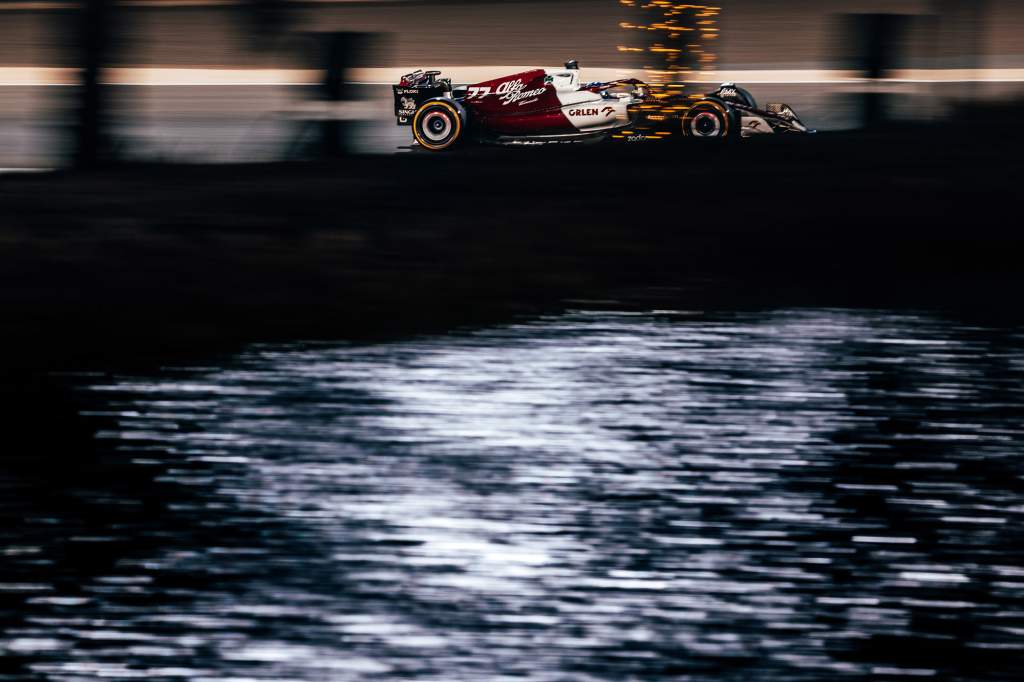
The top four teams of last year appear to still be the top four on pace. But behind them appears to be an amorphous blob of the remaining six teams!
Aston Martin is probably the best of this group. Alfa Romeo driver Valtteri Bottas did a very good time on the C3 tyre late in the day, one which Fernando Alonso’s Alpine needed the C4 tyre to beat – and not by as much as the tyre difference would account for.
The Haas is right in this pack now, while AlphaTauri had a subdued final day and the Williams hasn’t really demonstrated anything great as yet. But that wasn’t helped by disruption to its programme yesterday, which led to Albon doing its quick runs in the heat of the afternoon sun – leaving it an unrepresentative 1.9s off the back.
Cars can follow closely…but the tow is less potent

In Bahrain, we saw several pairs of drivers having a quick play in traffic to get a feel for what it’s like following closely in a 2022-spec Formula 1 car. The consensus is that it is indeed easier than with the old cars.
Barcelona had already given a hint of this, but Bahrain – a circuit where overtaking has always been far easier – confirmed it. On several occasions, we saw cars tucked under the rear wing of another, and while they weren’t unaffected by turbulence, it did appear to be less of a problem.
The downside is that the effect of the two also appears to have been reduced. We also saw drivers tucked under the rear wings of a rival on the straight making less progress than they normally would in the slipstream, an effect that was supported by the driver comments.
What this all means for the racing can only really be judged once we’ve seen a number of races play out.
Magnussen’s Haas homecoming started well
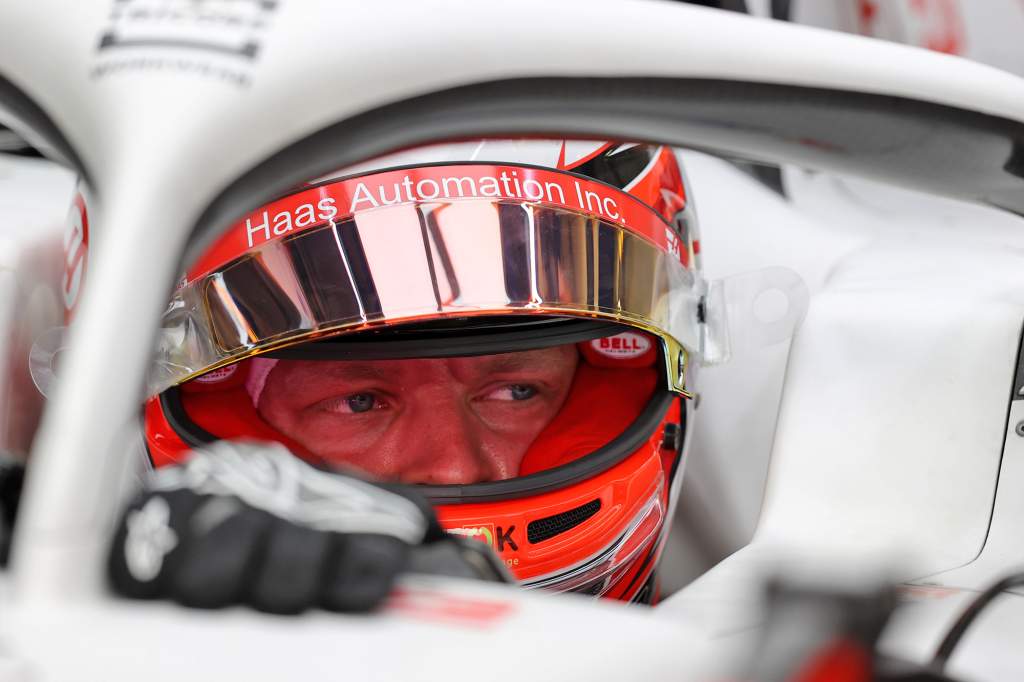
Predicting a few weeks ago that Haas would top a day of pre-season testing and that Kevin Magnussen would be driving would have taken tremendous imagination.
Magnussen is back at Haas and back in F1 after a whirlwind week in which the team moved to hire him as the replacement for the ousted Nikita Mazepin.
He signed his contract on Wednesday night in Bahrain and was driving an F1 car again 48 hours later – killing his neck in the process!
But it’s going well. Magnussen’s return has given Haas a clear morale boost. He is tipped to be an excellent reference for Mick Schumacher. And he’s immediately comfortable in familiar surroundings again.
Haas was allowed to run for an hour longer on Friday then start an hour earlier and finish two hours later on Saturday, after a cargo plane problem caused it to miss the first four-hour session on Thursday. And Magnussen used the cooler conditions and clear track on Friday to set the fastest time!
And yes, the Haas must be running lower fuel and/or higher engine modes than some others. Plus it’s had different track conditions.
But you can’t dress up a bad or slow car at this stage of testing. Whether it’s on the lap times, the TV screens, or through our own eyes watching trackside, the Haas VF-22 looks like it has a solid foundation.
Fire forces Williams onto the back foot
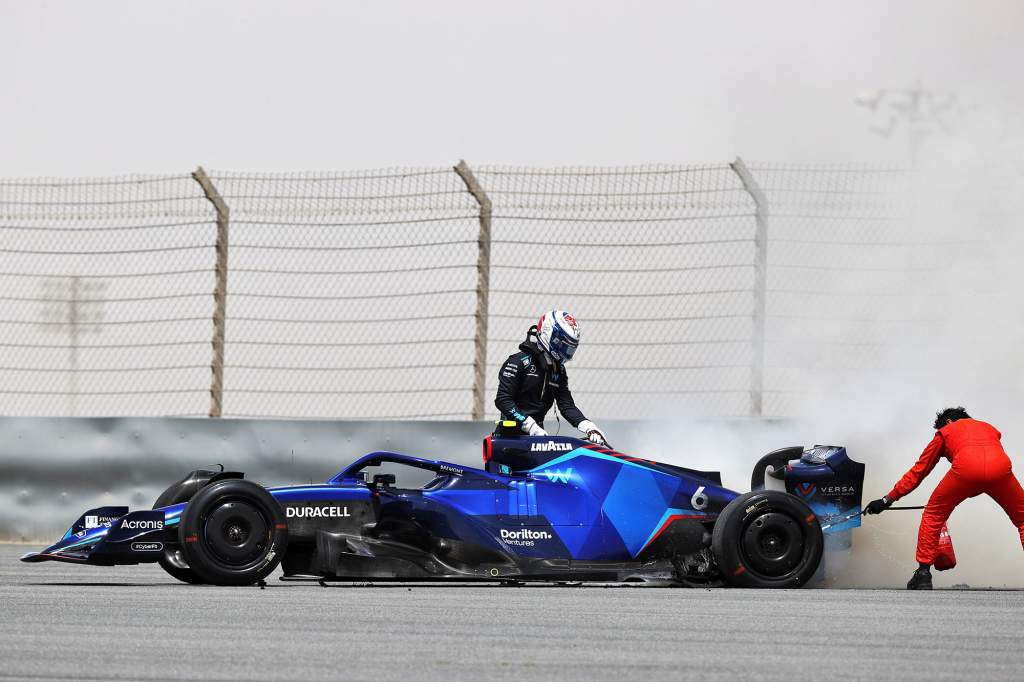
Williams F1 boss Jost Capito was able to laugh that the cause of its fiery setback on Friday was “too silly to speak about” but the reality was far from funny for Williams.
An unspecified procedural problem led to the rear brakes overheating and catching fire on Friday with Latifi driving. Our best guess is human error led to the brakes being too hot when the car left the garage.
Once the rear brakes caught fire, Latifi tried to nurse it back to the pits but the fire melted a suspension component and caused a failure. The total damage was enough to end his day after 12 laps. So it wiped out one of Latifi’s three days of running and one-sixth of the team’s test.
It undoes a lot of the good that came before it as Williams looked like it was in a strong position – lots of mileage, no real setbacks, just ticking off a lot of items on its to-do list.
The team tried to limit the consequences by rejigging its run plan on Saturday to let Latifi drive some more. That meant a curious sequence of Latifi driving in the morning, Albon hopping in for 18 laps after lunch, then Latifi being given the car again for the rest of the day. It worked in terms of boosting Latifi’s mileage but left Albon completing the team’s qualifying simulation in the unrepresentative afternoon conditions.
Another part of the problem is Williams had a lot of work to do to understand the 2022 tyres. It was the only team that didn’t take part in the Pirelli mule car testing last year and the team’s adamant that has been costly (the reason for not taking part was it needed to be signed off in 2020, and Williams’s pre-Dorilton era financial situation didn’t allow for it). Forfeiting a day of work has proven significant as a result.
So with one dramatic issue, Williams has gone from looking in good shape to admitting it will be on the back foot going into next weekend’s season opener.
A final hint of Red Bull’s advantage
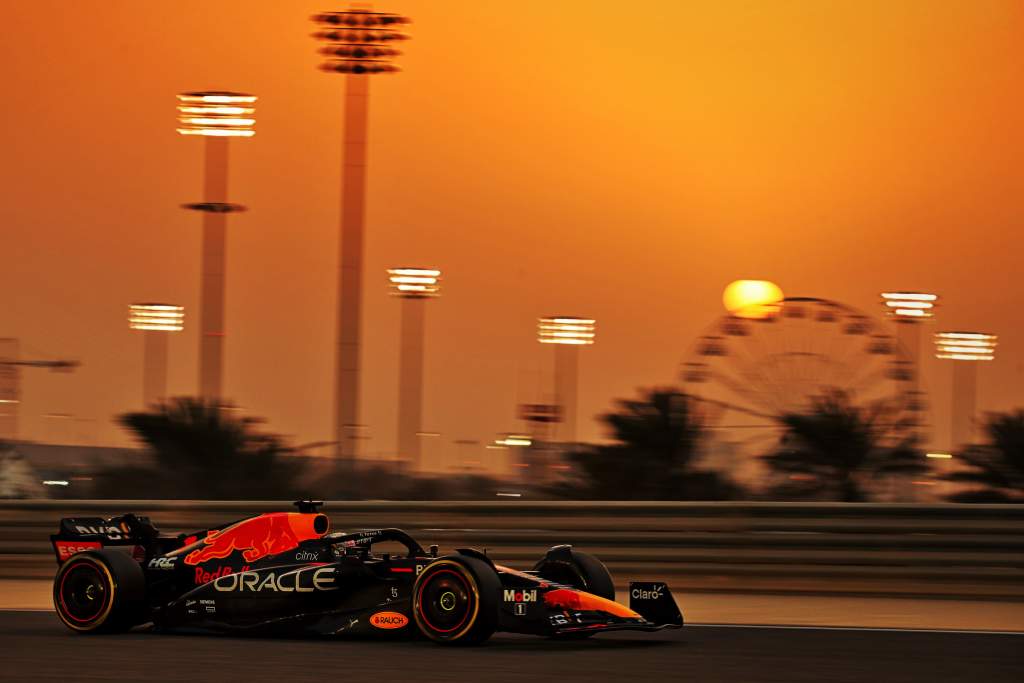
Verstappen’s pace and some of our observations come with the caveat that he did use the softest compound tyres. And the RB18 wasn’t flawless – once or twice he seemed traction limited on the power, and the wheelspin was audible.
But trackside, on several compounds, the Red Bull looked fantastic. Watching at Turn 10 in the final hour it was on rails. Verstappen had no issues carrying speed into the corner, there’s no sign of understeer – the front just tucks in really nicely – and noticeably Verstappen was able to get to the inside kerb seemingly at will. The RB18 took the kerb strike neatly in its stride, too.
We watched Verstappen on C2s, C3s, C4s and C5s and the Red Bull just has a lot of purpose about it. The Ferrari looked strong too but without the same ‘wow factor’ and the Mercedes needed a few runs to start catching the eye.
These are only glimpses of the real competitive order, but they do hint at a Red Bull advantage.




